Holacracy Communications Framework
A Rosetta stone for Holacracy-powered organizations.
A Rosetta stone for Holacracy-powered organizations.

Of all the habits to change with Holacracy practice, habits of language are probably the most powerful. We not only talk about power — our speech has power. It can be power. Our words can actually create boundaries and expectations.
You could even say Holacracy adoption is largely about learning a new way of speaking. A way of speaking based on getting clarity. And usually, it’s more clarity than we’re accustomed to.
But if everyone around you is speaking this way — it’s not that awkward. Because communication habits are self-reinforcing. Group norms tend to stay group norms. Everyone does it because, well, everyone does it.
Norms at rest tend to stay at rest. But that also means they’re not easy to change. So, if it’s going to happen at all, it’ll happen because each individual takes responsibility for their involvement in both sides of the communication; i.e. what you say and what you hear.
For example, if the former “boss” demands you do something — is that bad? Shouldn’t they look at the roles? Well, sure. That’s the ideal. But everyone should have the right to have a bad day. So, actually they can make demands all day — there’s only a problem if you interpret their demands as demands, and start taking action.
This is what I mean by taking responsibility for what you hear. Instead of just doing what they say, why not ask, “Is there a specific role of mine your asking, or are you just asking for a favor from me personally?” Maybe there is a specific role. Maybe not. Find out.
Therefore, the model isn’t just a complete typology of all the communication “types,” but more importantly, it describes what these different types actually sound like when people use them. And communications are different when you’re requesting something (i.e. initiating), from when you’re trying to clarify someone else’s request (i.e. responding), so all of that is included in the map below.
Note: But before we get to the model, a clarification. This post talks about norms, but I want to be clear; Holacracy-proper (i.e. the rules of the constitution) has nothing to say about norms. So, don’t think of what I’m sharing here as “What Holacracy says,” because the constitution doesn’t say anything about this. Instead, think of this content as, “What one experienced coach and practitioner has observed as typical communication patterns of successful real-world Holacracy practice.”
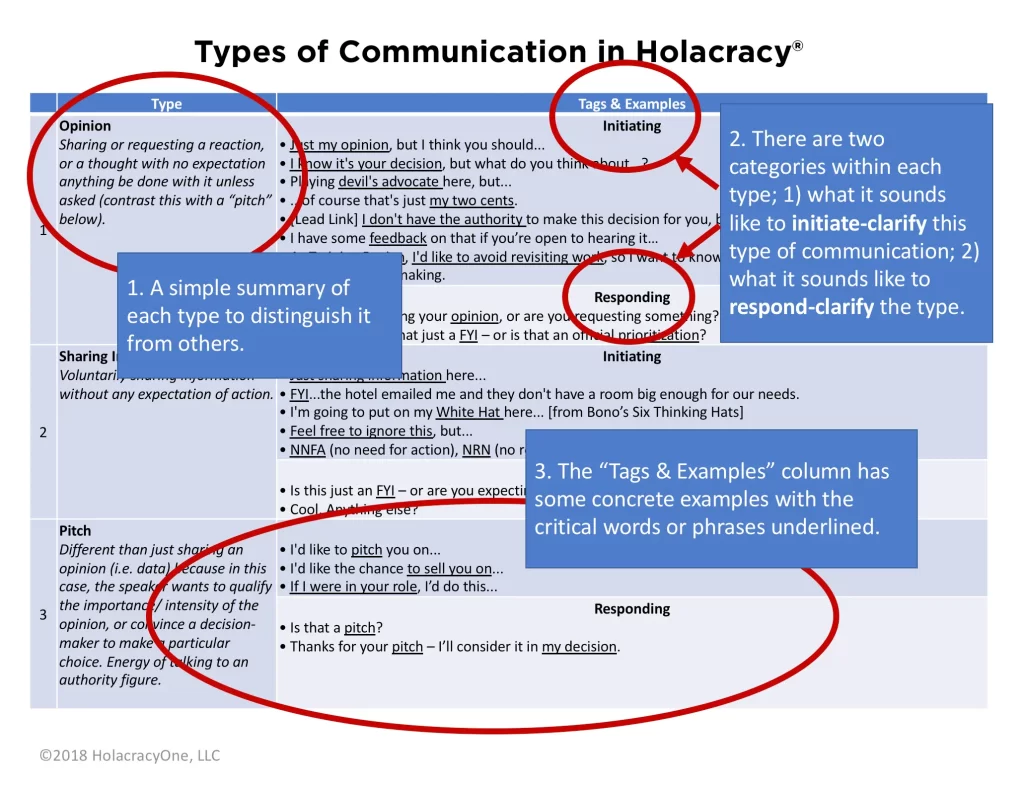
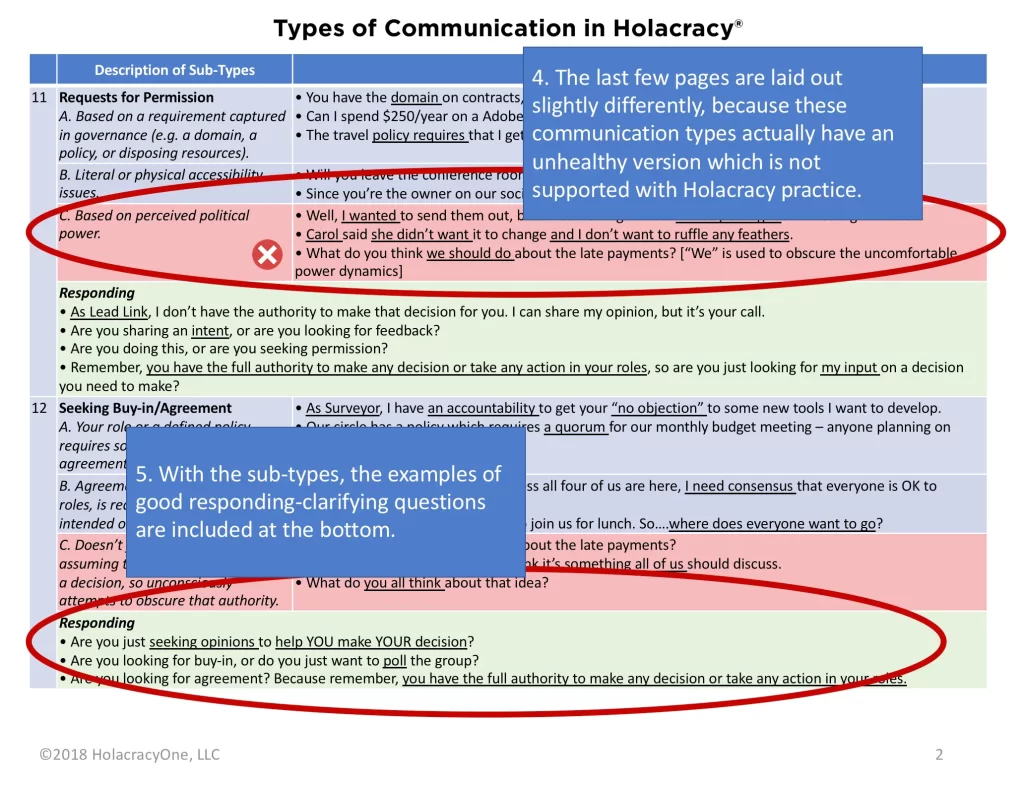
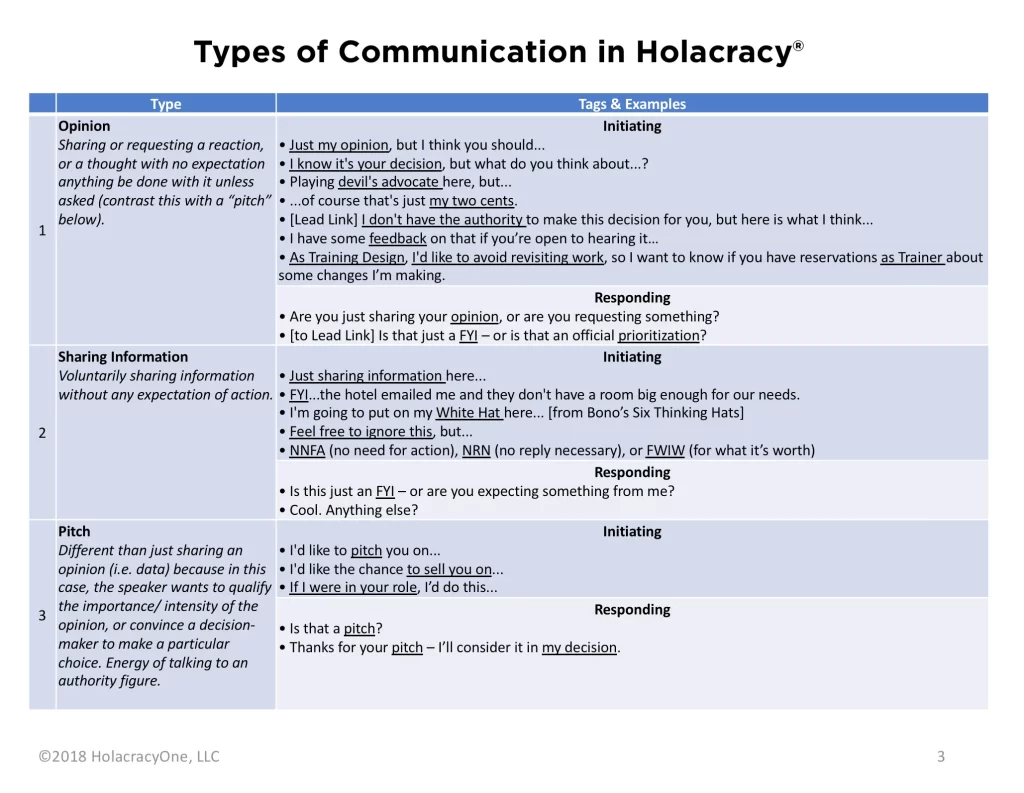
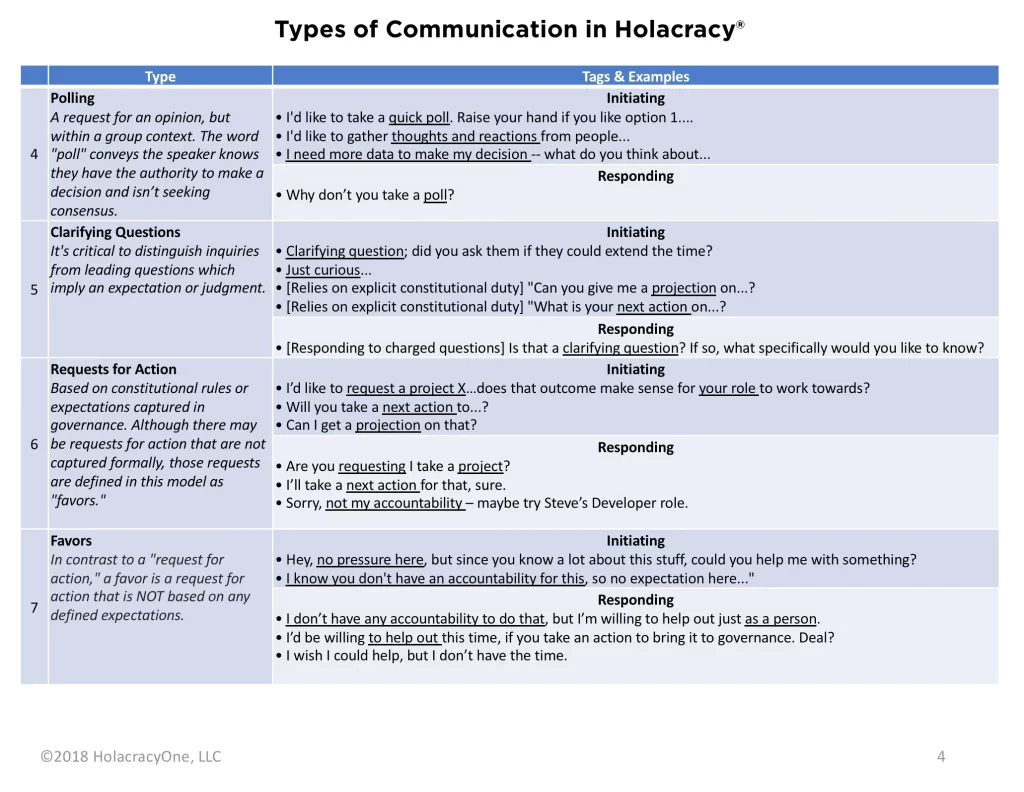
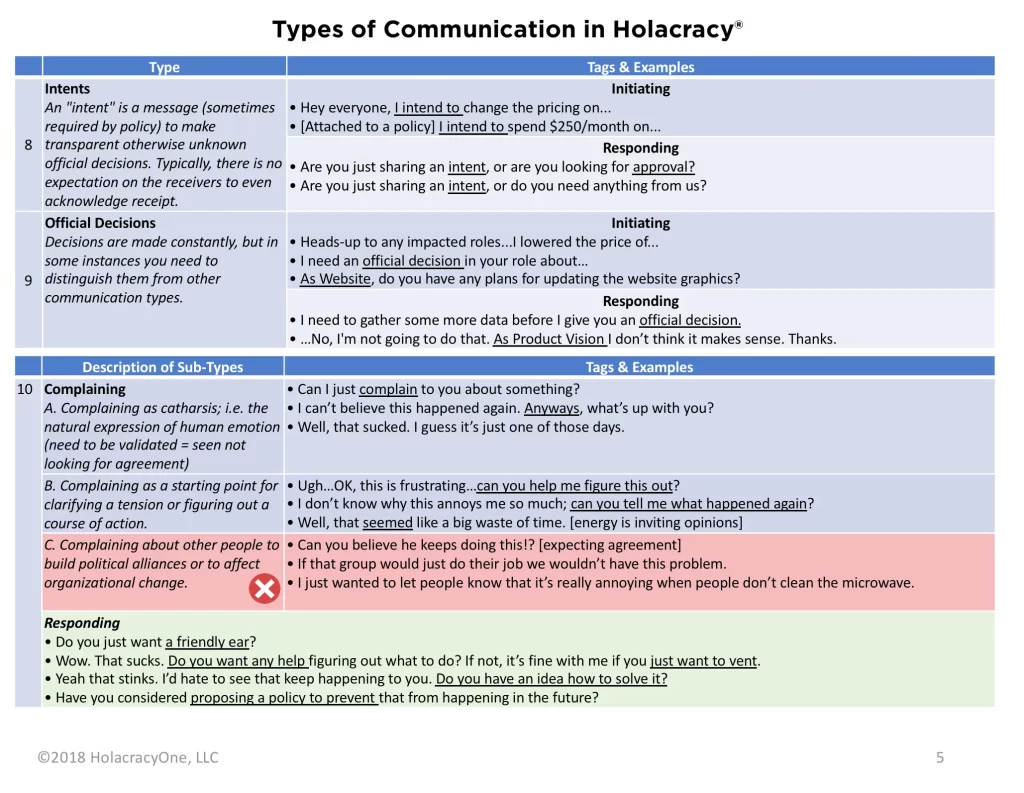
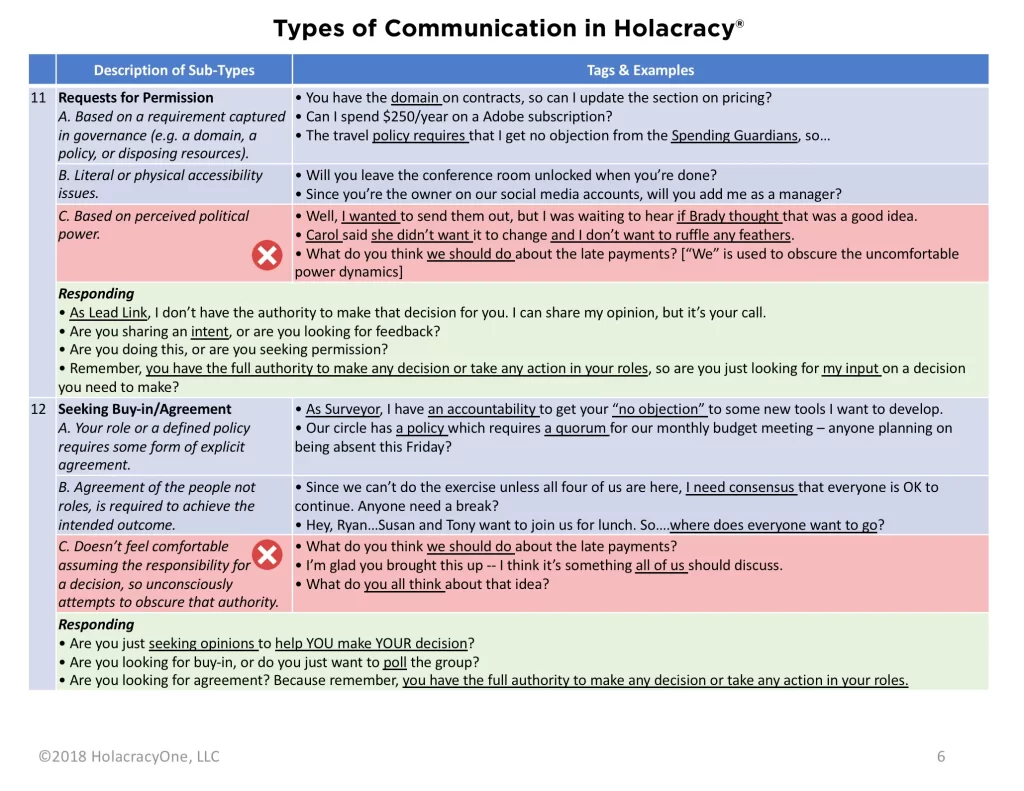
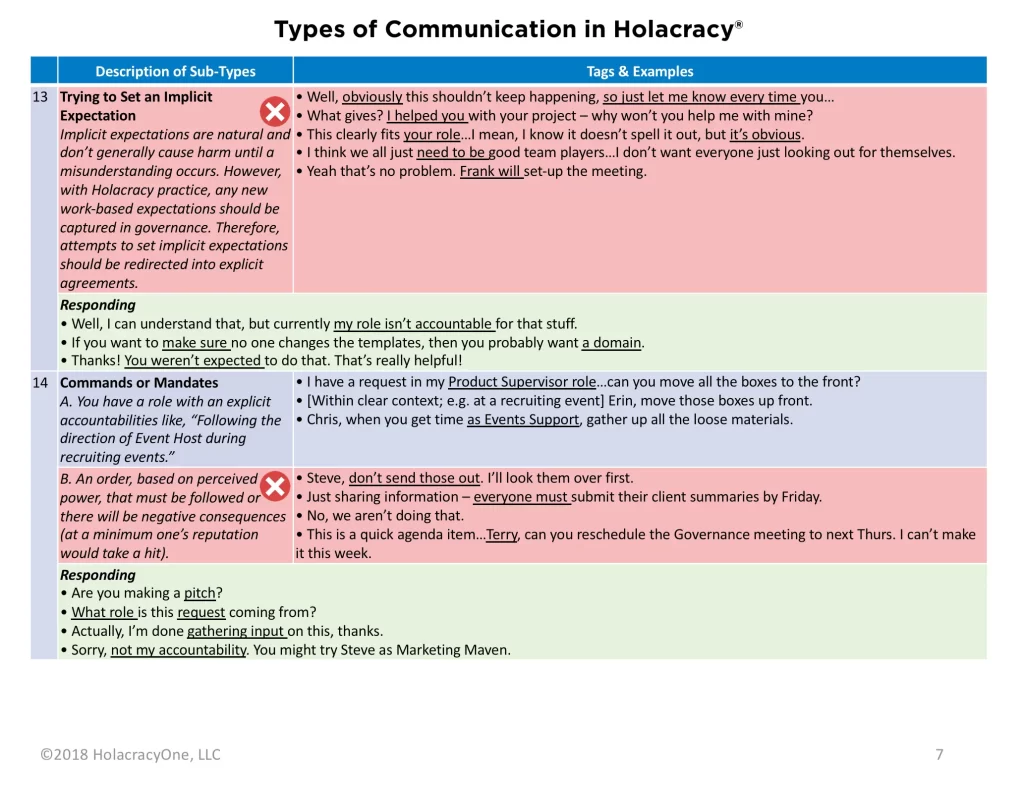
When everyone takes individual responsibility for clarifying messages, then no one can point the finger at someone else for “not being clear.” In reality, we never reach perfect clarity.
Instead, let’s use a more reasonable criteria. How about, I’ll just do what I can to clarify what I need, AND I’ll do what I can to clarify your messages when I need to understand them.
And if it makes sense to you to do the same, awesome. Now, our communication has two points of failure, not one. And if that becomes a social norm, then Holacracy practice is more than just a radical power shift. It’s better than that. It’s just the way we work together.
Read “Introducing the Holacracy Practitioner Guide” to find more articles.
To learn more about self-management, join a community of pioneers and check out our e-courses → Self-Management Accelerator
